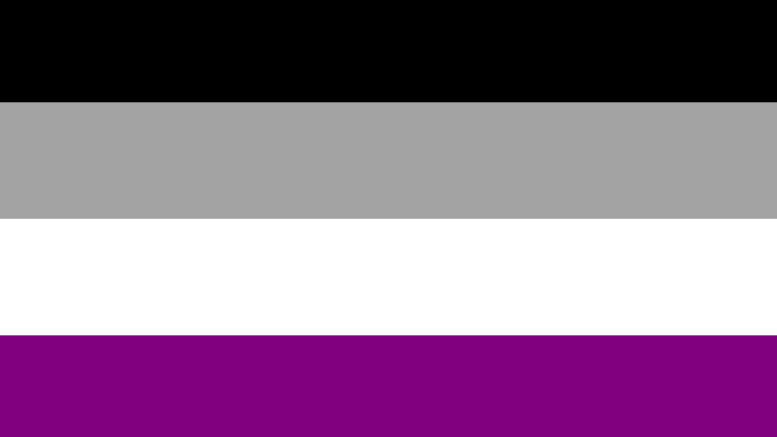Asexuality, where people experience little to no sexual attraction, is one of the lesser known sexualities. It is also known as the “hidden sexuality”, because its members, who refer to themselves as “ace,” short for asexual, can “hide” among other groups quite easily.
Asexuality is often confused with celibacy, abstinence, or hyposexuality (when someone doesn’t experience sexual attraction for a period of time). The sexuality was first defined in 1997 and is the last sexuality listed in some variations of the full LGBTQQIP2SAA+ acronym (lesbian, gay, bisexual, transgender, questioning, queer, intersex, pansexual, two-spirit, androgynous and asexual).
A study done by the University of California Los Angeles found that 1.7 per cent of sexual minority adults ( members of the LGBTQ2S+ community) identify as asexual.
Taylor, a 22-year-old asexual based in Toronto who asked to use her first name only for privacy reasons, has found how easy it can be to blend in — and the challenges this presents — throughout her personal journey of being ace.
She said she had always known the term, but didn’t come to the realization she was ace until she reached high school.
“I think the thing about being ace is that it can be easier to cover up to the outside world,” said Taylor. “This is a privilege we have; we can be straight-passing by remaining single, [by surrendering] to sex within relationships, or by keeping quiet about a nonexistent bedroom life.”
“But, in the same breath, our orientation gets excluded from LGBT+ narratives. What is the ‘A’? Even people in the community might not be able to offer a clear definition.”
Gatekeeping and cat-calls
People in the asexual community say they often have to deal with other members of the LGBTQ2S+ gatekeeping their inclusion in the broader community. Asexuals often get called “confused straight people” or get told the lack of sexual attraction isn’t enough for them to be included in the LGBTQ2S+ community.
“The first time that we marched in the Toronto Pride parade, I think in 2010, we had really, really powerful negative reactions to that people in the parade were telling us to go get our sexual orientations cured.” CJ Chasin, an author of multiple peer-reviewed academic articles on asexuality, said in an ACE week seminar held virtually on Oct. 26.
“We had people who were happier to see the conservative parties — They were happier to see that group than they were to see us. We got booed, we got cat-called, it was not fun.”
Straight people, on the other hand think asexuals are “just waiting for the right person,” or that asexuality is a medical condition that that can — and should be — fixed, members of the community say.
Destinie Vidrio, an asexual-identifying trauma-focused therapist and Pepperdine university faculty, has seen and experienced the divide many times.
“I’ve seen this mostly on social media and backlit: ‘Oh, you’re just a prude,’ ‘You’re straight and you just don’t know who you are yet oh you’re just trying to you’re just trying to put into the community because you want to feel like you belong somewhere,’ ‘Oh, you never really experience oppression, because you’re really just straight,’” they said during a seminar.
A big complex tree with many branches
What’s often left out of the discussion when it comes to asexuality is the fact that it’s a spectrum. There are several identities on the spectrum, with the most common being asexual (little/no sexual attraction), demisexual (sexual attraction occurs with a strong emotional connection), graysexual (aces who don’t fit the main types of asexuality), and their romantic counterparts. Think of asexuality as a big, complex tree with many different branches, yet most people only see the trunk.
“Some of us are sex-repulsed and do not ever want to have sex,” Taylor said. “Some aces have and enjoy sex — it just doesn’t come out of a feeling of sexual attraction. We can still physically experience pleasure and arousal (independent of attraction to a person).”
And in a society obsessed with sex, those who don’t conform get left out or forgotten, seen as cold aliens who are prudish and anti-sex.
“How can you be in [a relationship] if you don’t understand true intimacy? If we can’t be intimate, and this is the misconception we get a lot. We also tend to hear that sex equals Intimacy. We were brought up this way, this is how things are supposed to work,” Yana Vicolova said in a seminar.
There has been some progress in getting asexuality more recognition. Asexuals now have their own Pride week; Oct. 24 – Oct. 30, which is all about celebrating asexuality and educating people. There have also been more asexual characters in media in the last couple years, from Todd Chavez in Bojack Horseman to Jughead in Archie.
Representation is important to minority groups, especially for those lesser known sexualities who don’t get much representation at all, said one Toronto resident who identifies as ace.
“I think it’s important because it makes us asexuals feel understood,” M.J. (24) creator of asexualtorontofam, said. “Others who are not asexual learn and understand us better since we’re not represented as much … when we are, it’s like we’re seen and valued by others who may or may not be ace, which is such an amazing feeling.”
M.J. has dedicated a the asexualtorontofam Instagram page called to sharing relatable memes and educating others about asexuality. There aren’t a lot of Toronto based pages that focus on asexuality. Hashtags like #Torontoace or #asexualtoronto have a sprinkle of posts. Tiktok doesn’t have a hashtag for Toronto asexuals specifically.
As the number of LGBTQIA+ members keeps growing, however, so does the representation of asexuals, which better reflects the complexity of this spectrum.
“Every asexual experience is different. But we all have the capacity to love and connect. It just might look a little different,” Taylor said.

